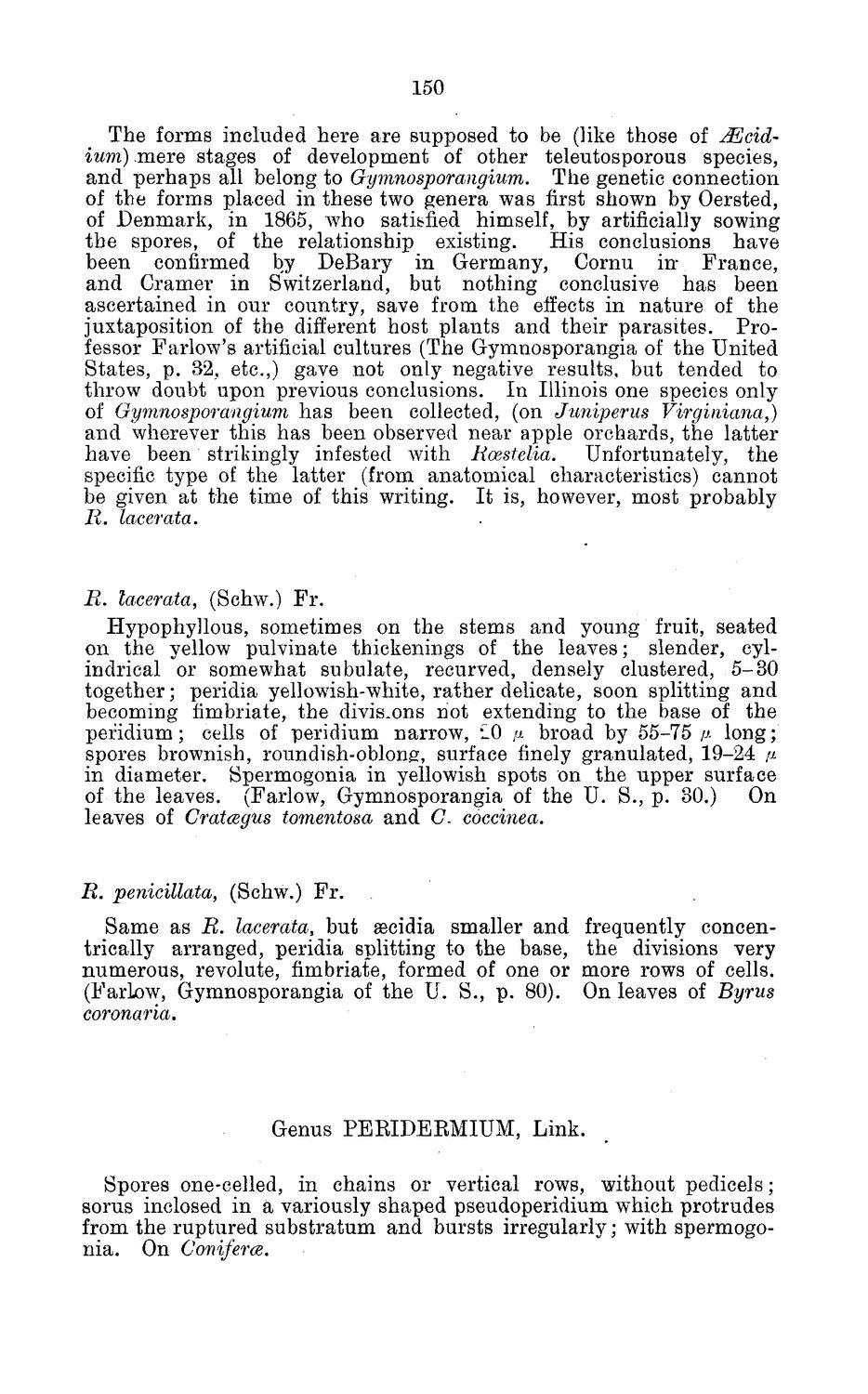| |
| |
Caption: Board of Trustees Minutes - 1884
This is a reduced-resolution page image for fast online browsing.

EXTRACTED TEXT FROM PAGE:
150 The forms included here are supposed to be (like those of Mci&ium)m.exe stages of development of other teleutosporous species, and perhaps all belong to Gymnosporangium. The genetic connection of the forms placed in these two genera was first shown by Oersted, of Denmark, in 1865, who satisfied himself, by artificially sowing the spores, of the relationship existing. His conclusions have been confirmed by DeBary in Germany, Cornu in* France, and Cramer in Switzerland, but nothing conclusive has been ascertained in our country, save from the effects in nature of the juxtaposition of the different host plants and their parasites. Professor Farlow's artificial cultures (The Gymnosporangia of the United States, p. 32, etc.,) gave not only negative results, but tended to throw doubt upon previous conclusions. In Illinois one species only of Gymnosporangium has been collected, (on Juniperus Virginiana,) and wherever this has been observed near apple orchards, the latter have been strikingly infested with Roestelia. Unfortunately, the specific type of the latter (from anatomical characteristics) cannot be given at the time of this writing. It is, however, most probably R. lacerata. R. lacerata, (Schw.) Fr. Hypophyllous, sometimes on the stems and young fruit, seated on the yellow pulvinate thickenings of the leaves; slender, cylindrical or somewhat subulate, recurved, densely clustered, 5-30 together; peridia yellowish-white, rather delicate, soon splitting and becoming fimbriate, the divisions not extending to the base of the pefidium; cells of peridium narrow, iO /* broad by 55-75 /A long; spores brownish, roundish-oblong, surface finely granulated, 19-24 n in diameter. Spermogonia in yellowish spots on the upper surface of the leaves. (Farlow, Gymnosporangia of the U. S., p. 30.) On leaves of Cratcegus tomentosa and C. coccinea. R. penicillata, (Schw.) Fr. Same as R. lacerata, but aecidia smaller and trically arranged, peridia splitting to the base, numerous, revolute, fimbriate, formed of one or (Farlow, Gymnosporangia of the U. S., p. 80). coronaria. frequently concenthe divisions very more rows of cells. On leaves of Byrus Genus PEEIDEEMIUM, Link. Spores one-celled, in chains or vertical rows, without pedicels; sorus inclosed in a variously shaped pseudoperidium which protrudes from the ruptured substratum and bursts irregularly; with spermogonia. On Coniferce.
| |